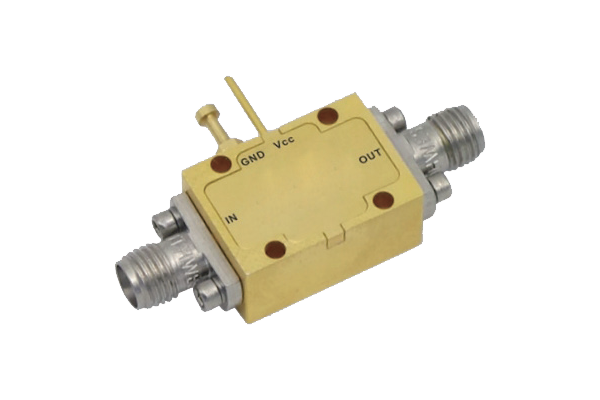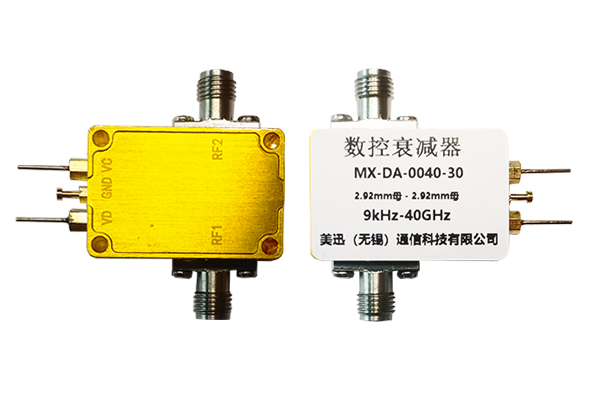
Pin diode components are considered indispensable in advanced RF applications because of their core operational properties Their quick conductive to nonconductive switching and compact capacitance with limited insertion loss make them perfect for switches modulators and attenuators. The essential process enabling PIN diode switching is manipulating current through the diode using a biasing voltage. A change in bias voltage transforms the depletion-region width of the p–n junction, affecting conductance. Modifying the applied bias permits PIN diodes to function at high frequencies with minimal signal distortion
When precise timing and control are needed PIN diodes are frequently embedded within advanced circuit configurations They are suited to RF filtering arrangements for selective band pass and band stop operations. Their robust power handling means they can be used in amplifier power distribution and signal generation roles. Reduced size and improved efficiency of PIN diodes have enhanced their applicability in wireless and radar engineering
Evaluating Coaxial Switch Design and Functionality
The design of coaxial switches is intricate and needs detailed assessment of numerous variables The operation of a coaxial switch is affected by the selected switch topology frequency band and insertion loss behavior. Minimizing insertion loss and enhancing isolation are primary goals for coaxial switch engineering
Analyzing performance involves measuring important parameters like return loss insertion loss and port isolation. Metrics are assessed using simulation tools theoretical modeling and laboratory measurements. Reliable operation of coaxial switches demands thorough and accurate performance analysis
- Common analysis methods include simulation tools theoretical analysis and hands-on experiments to study switch performance
- Factors such as temperature variations impedance mismatch and fabrication tolerances can impact switch behavior
- Emerging developments and novel techniques in switch design concentrate on boosting performance while minimizing footprint and energy use
Optimizing LNA Designs for Performance
Refining the LNA for better performance efficiency and gain underpins superior signal fidelity in systems It requires selecting suitable transistors setting optimal bias conditions and choosing the right topology. Well engineered LNA circuits reduce noise influence and increase amplification while controlling distortion. Design evaluation relies heavily on simulation and modeling tools to measure noise effects of various choices. Achieving a reduced Noise Figure demonstrates the amplifier’s effectiveness in preserving signal amid internal noise
- Prioritizing low-noise transistors is crucial for optimal LNA performance
- Using appropriate optimal bias schemes is important to control transistor noise
- Topology of the circuit strongly affects total noise performance
Tactics like impedance matching noise mitigation and feedback regulation advance LNA performance
RF Routing Strategies with PIN Diode Switches

PIN diode switching mechanisms deliver versatile and efficient RF path routing across designs Their high-speed switching lets systems dynamically alter signal routing in real time. Their minimal insertion loss and robust isolation characteristics prevent significant signal degradation. They are applied in antenna selection circuits duplexers and phased array antenna systems
Switching depends on bias-induced resistance changes within the diode to route signals. In its open state the diode’s resistance is high enough to stop signal flow. Forward biasing the diode drops its resistance allowing the RF signal to be conducted
- Additionally PIN diode switches yield high switching speed low power draw and compact footprint
Different design configurations and network architectures of PIN diode switches provide flexible routing functions. Through interconnection of switches one can construct dynamic matrices for adjustable signal path routing
Performance Assessment for Coaxial Microwave Switches

Detailed assessment and testing validate coaxial microwave switches for optimal function across electronic systems. Many various diverse factors determine the switches’ performance including insertion reflection transmission loss isolation switching speed and bandwidth. An exhaustive evaluation procedure measures these parameters across varied operating environmental and test conditions
- Additionally the evaluation should incorporate reliability robustness durability and capacity to handle severe environmental conditions
- In the end the outcome of rigorous evaluation supplies essential valuable and critical information for switch selection design and optimization
Comprehensive Survey on Minimizing LNA Noise
LNA circuits play a crucial role in wireless radio frequency and RF systems by boosting weak inputs and restraining internal noise. The review provides a comprehensive examination analysis and overview of noise reduction techniques for LNAs. We examine investigate and discuss the fundamental noise sources including thermal shot and flicker noise. We additionally assess noise matching feedback architectures and optimal bias strategies to curtail noise. The article highlights recent advances such as novel semiconductor materials and innovative circuit architectures that reduce noise figure. By providing insight into noise minimization principles and practices the review supports researchers and engineers working on high performance RF systems
Rapid Switching System Uses for PIN Diodes

PIN diodes display exceptional unique and remarkable characteristics making them suitable for high speed switching Low capacitance combined with low resistance produces rapid switching for applications requiring precise timing. In addition PIN diodes display linear voltage response that supports precise amplitude modulation and switching performance. Their adaptable flexible and versatile nature makes them suitable applicable and appropriate for broad high speed applications Examples of deployment include optical communication systems microwave circuits and signal processing equipment and devices
IC Based Coaxial Switch and Circuit Switching Technologies
Coaxial switch integrated circuits deliver improved signal routing processing and handling within electronic systems circuits and devices. IC coaxial switch solutions orchestrate control management and directed signal flow through coaxial media while keeping high frequency performance and reduced latency. Integrated circuit miniaturization creates compact efficient reliable and robust designs favorable for dense interfacing integration and connectivity use cases
- By meticulously carefully and rigorously applying these methods developers can produce LNAs with superior noise performance enabling sensitive reliable electronics By rigorously meticulously and carefully implementing these techniques practitioners can achieve LNAs with remarkable noise performance for sensitive reliable electronics Through careful meticulous and rigorous application of such methods engineers can design LNAs with top tier noise performance enabling dependable sensitive systems With low-noise amplifier careful meticulous and rigorous execution of these strategies designers can obtain LNAs exhibiting excellent noise performance for sensitive reliable systems
- Applications cover telecommunications data networking and wireless communication systems
- Aerospace defense and industrial automation benefit from integrated coaxial switch solutions
- Consumer electronics A V devices and test measurement apparatus make use of IC coaxial switch technologies
mmWave LNA Engineering Considerations

mmWave LNA challenges include significant signal attenuation and greater sensitivity to noise sources. Component parasitics strongly influence mmWave performance mandating careful PCB layout and component choice. Keeping input mismatch low and power gain high is critical essential and important in mmWave LNA designs. Devices such as HEMTs GaAs MESFETs and InP HBTs are important selections to meet low noise figure goals at mmWave. Additionally the development implementation and optimization of matching networks plays a vital role in efficient power transfer and impedance matching. Package parasitics must be managed carefully as they can degrade mmWave LNA behavior. Using low loss transmission lines and thoughtful ground plane designs is essential necessary and important for minimizing reflection and keeping high bandwidth
PIN Diode RF Characterization and Modeling Techniques
PIN diodes exist as key components elements and parts in several RF switching applications. Detailed accurate and precise characterization of these devices is essential to design develop and optimize reliable high performance circuits. This process includes analyzing evaluating and examining the devices’ electrical voltage and current traits including resistance impedance and conductance. Also measured are frequency response bandwidth tuning abilities and switching speed latency or response time
Furthermore developing precise models simulations and representations for PIN diodes is crucial essential and vital to forecast performance in complex RF systems. A range of modeling approaches including lumped element distributed element and SPICE models are used. The choice of model simulation or representation hinges on the specific application requirements and the desired required expected accuracy
Advanced Cutting Edge Sophisticated Techniques for Low Noise Quiet Minimal Noise Amplifier Design
Developing LNAs involves diligent consideration of circuit topology and components to obtain optimal noise performance. New and emerging semiconductor advances have led to innovative groundbreaking sophisticated design techniques that lower noise substantially.
Among the techniques are utilizing implementing and employing wideband matching networks integrating low noise high intrinsic gain transistors and refining biasing schemes strategies and approaches. Additionally advanced packaging and thermal management practices are critical for minimizing external noise influences. Through careful meticulous and rigorous implementation of these approaches engineers can achieve LNAs with exceptional noise performance supporting sensitive reliable systems
